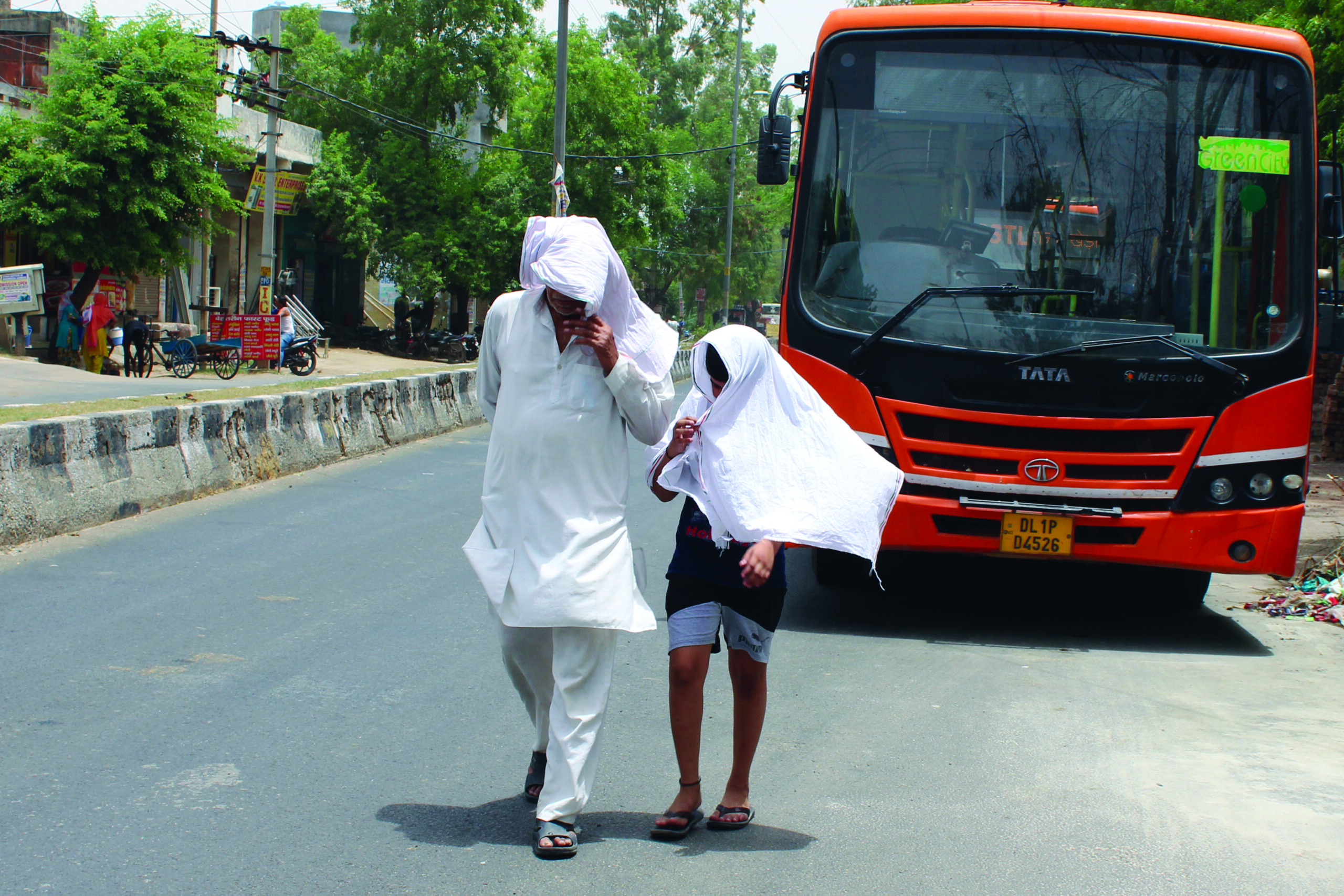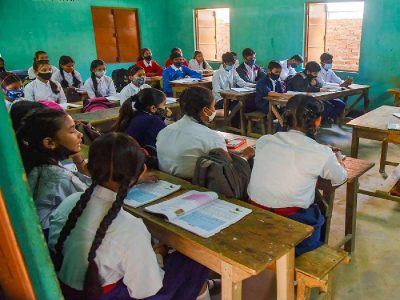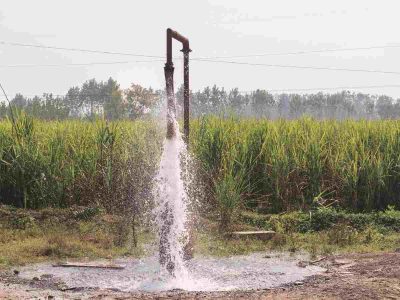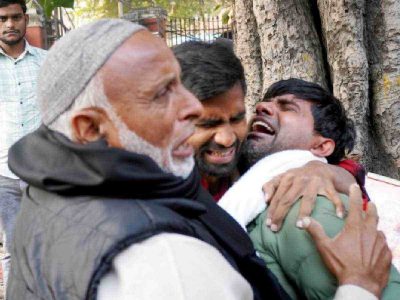The national capital region has been sweltering amid an intense heatwave for the last few weeks. The heatwave, which hit Delhi unusually early this year, has impacted on many lives, reduced crop yields, and created discomfort among the locals.
In Mungeshpur, the temperature recorded in May was 49.2 degrees Celsius, making it the hottest place in Delhi. The urbanized village, situated in the northwest part of Delhi near the Haryana border, is home to 10,000 people and many industries. Several times over the last few years, the mercury topped 45 degrees Celsius.
“Earlier there used to be a lot of greenery with open spaces and clear air ventilation, but now the farm fields are changing into residential areas. The rising temperature in the area is majorly because greenery is slowly diminishing,” explains a government official who works in Mungeshpur.
Residents of Mungeshpur village avoid coming out of their homes in the afternoon during heatwaves. When Patriot reached the locality, the area seemed deserted, with only a few shops open and little or no customers. A few hand-made pots made by the locals lay on the roadside. The houses of the poorer people are made of clay, which makes the heat even more unbearable.
In the first week of June, the maximum temperature marked 45 degrees Celsius consistently.
No mercy under the sun
One of the few people braving the heat is a 42-year-old saree seller, Mukesh, who roams the empty streets of Mungeshpur to earn a living. He says that he has no choice but to come out and work for himself and his family. Asked what problems he faces while working in the intolerable heat, he replied, “There are issues such as dehydration and fatigue when the heat becomes unbearable. Sales are few and far between, and strong winds and the lack of water facilities make it even more difficult. The time between 2 pm and 5 pm is extremely hot, this is when I also take significant breaks.” Mukesh uses handmade fans in the evenings to mitigate the heat.
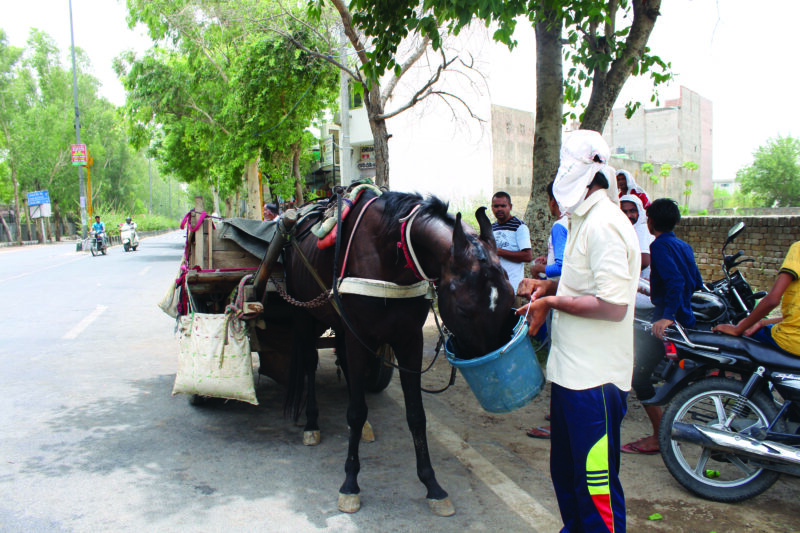
Sharing his concerns about the family, Mukesh explains that has to be extra careful with children and elderly people because the scorching heat causes vomiting and diarrhea. “The health facilities available are not that good either. For us, getting through the summers is quite tough.” Mukesh remarks.
To get a better picture of the health scenario in the area, Patriot interacted with the local doctor Tarun Mahajan, who said that every week, he gets patients who have fallen ill due to the extreme heat. “Heat stroke is one of the major problems in our village, especially for farmers who have to work in their fields, mostly in the afternoon”, Mahajan explains.
Why so hot?
RK Jenamani, a scientist at Indian Meteorological Department, said that Mungeshpur is a village close to Rajasthan and its geography is based on farmland. “The desert state of Rajasthan affects the area which makes it hotter than other parts of Delhi. Industrial factories set up in the nearby village of Narela make it even worse.”
The punishing heat has also hampered a variety of activities and has had a negative impact on health, resulting in cardiovascular and respiratory disorders. The heatwaves have also reduced soil fertility, he adds.
Mrityunjaya Mahapatra, Director General of Meteorology at India Meteorological Department, also added an expert opinion on Mungeshpur’s extreme weather. “Closed ventilation, industrial setup, environmental factors lead to the rise of temperature in many places – which is also known as urban heat island effect. The temperature may vary 4-5 degrees”, he explains.
Working class woes
Patriot interviewed Kamal, a construction worker who finds it difficult to work in this heat. “The heat slows us down but if we don’t work, what are we going to eat?”, Kamal remarks.
Kamal adds, “My family and other construction workers are struggling to cope with this heat. It’s really hard to remain calm and healthy. Loo lagne ka dar hai (We can fall victim to the hot wind). We try to drink as much as possible, but the water here is also not drinkable. To protect ourselves from heat, we soak our towels and handkerchief in water and wrap them around ourselves. It does not help much, but the situation is very miserable and we just hope that heatwaves end soon.”
Sanjeet, another person Patriot interviewed, works at the Municipal Corporation of Delhi and spends most of his time on the road during the daytime. “Earlier, there used to be ponds throughout the village but these are drying up, resulting in the increase in temperature every year”, he says.
Drinking water is not provided either by government bodies or charities on the roads, as used to be the practice in the past, which makes the plight of those who live on shacks beside the roads quite pitiable.
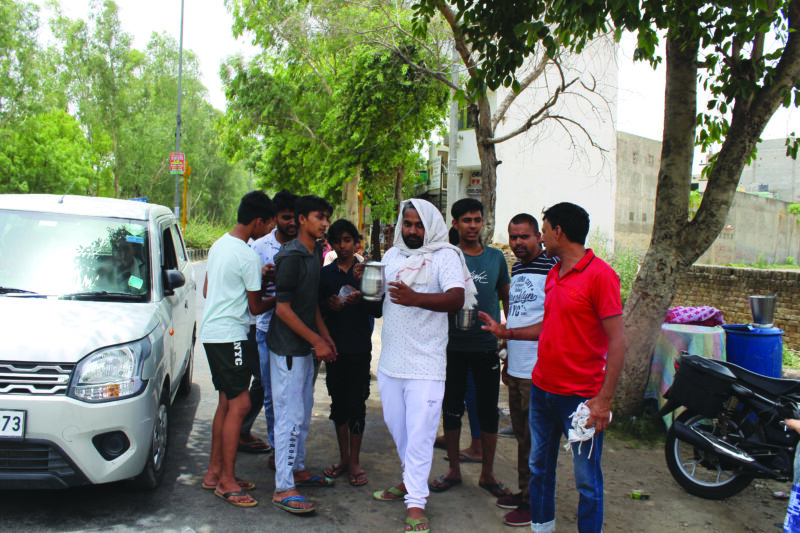
The MCD functionary confirms that when he is on duty, drinking water is difficult to find. “There is no facility for water most of the time. Sometimes people offer water out of courtesy and that is the only time we get it. There are also very few handpumps in the village, but there are people at different crossings who serve water to passersby. That helps a lot.”
Sanjeet said that the main reason for the increasing heat is less rainfall over the years. “It badly affects farming in the village and we have to use water of poor quality for farming and other basic chores”, he says.
On being asked about the power supply, Sanjeet affirms that there is electricity for upto 20 hours a day in the village. However, the electricity does not help much when heatwaves strike, he adds.
Apart from adults, children and young people are more vulnerable in this heatwave in the locality. Mohit, a Class 10 student, says, “We have to go to school at ten in the morning. There is no public transport and we either have to walk or go by bicycle. It becomes exhausting for us. The fans in the school are also useless and it becomes very hard for us to concentrate on our studies.”
According to the weather office, Delhi may see some relief from heatwaves after 15 June. People should, however, exercise caution when going out in this heat.
For more stories that cover the ongoings of Delhi NCR, follow us on:
Instagram: https://www.instagram.com/thepatriot_in/
Twitter: https://twitter.com/Patriot_Delhi
Facebook: https://www.facebook.com/Thepatriotnewsindia

